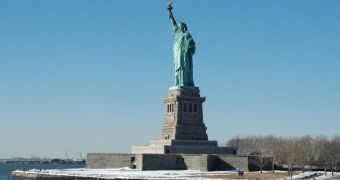A new paper in the journal Environmental Research Letters argues that, should the global warming trend continue unabated and average temperatures worldwide up by roughly 3 degrees Celsius when compared to pre-industrial levels, the world could lose as many as 136 of its current 720 UNESCO World Heritage sites.
According to the researchers who authored this paper, these 136 World Heritage sites could be lost to an increase in global sea levels as a result of ice loss.
As detailed by Eurek Alert, the Statue of Liberty, the Independence Hall, the Tower of London, and the Sydney Opera House are just some of the sites that risk being affected by rising sea levels.
The city centers of Brugge, Naples, Riga and St. Petersburg, Venice and its Lagoon, Robben Island, and Westminster Abbey stand to also be damaged by global warming and the subsequent increase in sea levels.
The somewhat good news is that, in order for these landmarks to be lost to rising sea levels, current global warming trends would have to be maintained over the course of the following two millennia.
Specialists say that, all things considered, this is not as unlikely a scenario as many would like to think.
“Our results show that if there is a 3 degrees Celsius temperature increase over the next 2000 years, which seems likely to be reached and is generally considered not to be an extreme scenario, the impacts on global heritage would be severe,” researcher Ben Marzeion explains.
“Sea-levels are responding to global warming slowly but steadily because the key processes involved – ocean heat uptake and melting continental ice – go on for a long while after the warming of the atmosphere has stopped,” the University of Innsbruck researcher goes on to detail.
Ben Marzeion and his colleagues further argue that, if their estimates are correct, a 3 degrees Celsius increase in global average temperatures over the following 2000 years will also cause several countries to lose part of their land.
More precisely, it is expected that as many as 7 countries, including the Maldives, Bahamas and Cayman Islands, will be left without roughly 50% of the land they now call theirs.
What's more, it would appear that another 35 countries have high chances to lose about 10% of their surface to rising sea levels, the researchers argue in their paper in the journal Environmental Research Letters.
Of the population predicted to be affected by global warming and subsequent ice loss, roughly 60% is said to live in China, India, Bangladesh, Vietnam and Indonesia.

 14 DAY TRIAL //
14 DAY TRIAL //